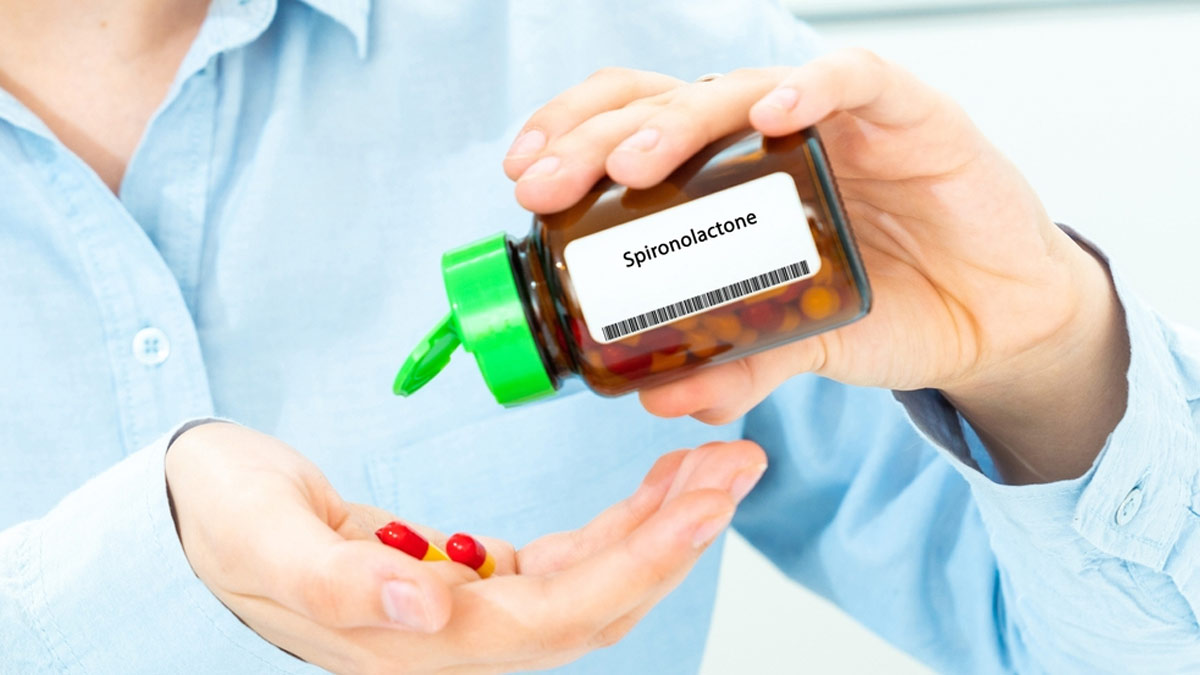
Acne is one of the most common skin conditions in teens and adults. Many factors, ranging from greasy skin to heavy sweating and humidity, can lead to acne and skin breakouts. However, one of the most common triggers is hormonal change.
Table of Content:-
Hormonal acne occurs when changes in the hormones increase the production of oil (sebum) in the skin. This can lead to various symptoms, including whiteheads, blackheads, and cysts. They commonly appear on the face, neck, back, and shoulders and are more likely to break out on the forehead than any other parts of the face, as per a study published in Experimental Dermatology.

When it comes to treating mild hormonal acne, there are several Over-The-Counter (OTC) products and medicines prescribed by doctors that promise to provide relief. One such medication is spironolactone, primarily used for treating high blood pressure, according to the American Academy of Dermatology Association (AADA).
A study published in the International Journal of Women’s Dermatology found that over 90% of the women saw improvement after taking spironolactone, with most experiencing a significant reduction in acne on their face, chest, and back. However, the study authors continue to emphasise the need for more research before determining the medication as a first-choice treatment for acne.
Spironolactone Use In Acne Treatment

Speaking with the OnlyMyHealth team, Dr Swapna Priya, Consultant Dermatologist, CARE Hospitals, Hitech City, Hyderabad, says, “Spironolactone is a medication primarily used as a diuretic (water pill) to treat fluid retention (oedema) in conditions such as heart failure, liver disease, and kidney disease. It's also used to treat high blood pressure (hypertension) and certain hormonal imbalances, like hyperaldosteronism.”
However, according to the doctor, the medication has gained attention in recent years for its off-label use in treating acne, particularly in adult women.
She adds that spironolactone is recommended for acne treatment in cases where hormonal factors, such as excess androgen production, contribute to acne development.
Androgens are male hormones that are present in both men and women but are typically at higher levels in men. Spironolactone works by blocking the effects of androgens on the skin, thereby reducing oil production and preventing clogged pores, which are common triggers for acne, the doctor explains.
Who Can And Should Not Take Spironolactone For Acne?
Spironolactone is generally recommended for adult women with hormonal acne, particularly those who have not responded well to other acne treatments like topical medications or oral antibiotics, says Dr Priya.
It is less commonly prescribed for men due to the risk of feminising side effects, such as breast tenderness or enlargement (gynecomastia).
The expert further notes that spironolactone is prescribed for acne when other treatments have failed or for cases where acne is clearly hormonally driven.
She warns against the use of the medication if a person has kidney disease, is pregnant or planning to become pregnant, has a history of breast cancer, or is taking potassium supplements or other medications that increase potassium levels.
Also Read: From Weight Gain To Causing Acne: Expert Debunks Myths About Milk
‘Discuss Potential Risks With Doctors’

According to the dermatologist, just like any other medication, spironolactone also comes with certain side effects, which include:
- Increased urination
- Breast tenderness or enlargement in men and women
- Menstrual irregularities in women
- Low blood pressure (hypotension)
- High potassium levels (hyperkalemia), which can be dangerous
Dr Priya says that it's essential for individuals considering spironolactone for acne treatment to discuss the potential risks and benefits with their healthcare provider.
“Regular monitoring of potassium levels and blood pressure may be necessary during treatment,” she concludes.
Also watch this video
How we keep this article up to date:
We work with experts and keep a close eye on the latest in health and wellness. Whenever there is a new research or helpful information, we update our articles with accurate and useful advice.
Current Version